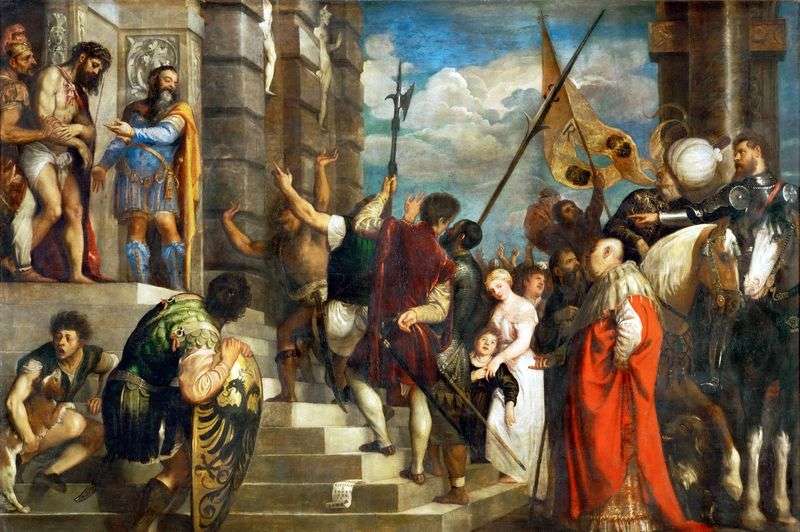
This painting was performed for Giovanni D’Ann, a wealthy Venetian merchant who had a palace, the Palazzo D’Anna, on the Grand Canal.
In presenting the history of the Gospel of how the tortured and bleeding figure of Christ was taken from the courtroom by the Roman procurator, Pontius Pilate, and put before the Jews to be executed. The picture shows the building with its staircase leading to the entrance of a grand public building on one side, which in many respects resembles the picture of the Presentation of the Virgin Mary in the Temple. Ecce Homo – “ce man”, lit. “here is a man”, “this is a person”.
The words of Pontius Pilate about Jesus Christ. according to the Gospel of John, the procurator of Judea, Pontius Pilate, showed to the people of Jerusalem after the scourging of Jesus Christ, clothed in purple and crowned with thorns, wishing to arouse the compassion of the crowd. “Then Jesus went out in the crown of thorns and purple, and Pilate said to them:” Behold, the Man! “When the chief priests and ministers saw Him, they cried:” Crucify, crucify Him! “Pilate says to them:” Take Him, and crucify; because I do not find fault in Him. “” This event took place on the late morning of Good Friday, in the Jerusalem praetorium, next to the tower of the castle of Antonia.
The painting is full of monumental scope and grandeur: the composition is based on enlarged, dynamic rhythms, the language of poses and gestures is affected and complicated. Particularly noteworthy is the image of the young man in the left corner of the picture. A man with horror and fear realizes the tragedy that has happened. Against the background of joyful and carefree persons who have authority over Christ, it looks with dramatic emphasis.
 Homme Xie – Titian Vecellio
Homme Xie – Titian Vecellio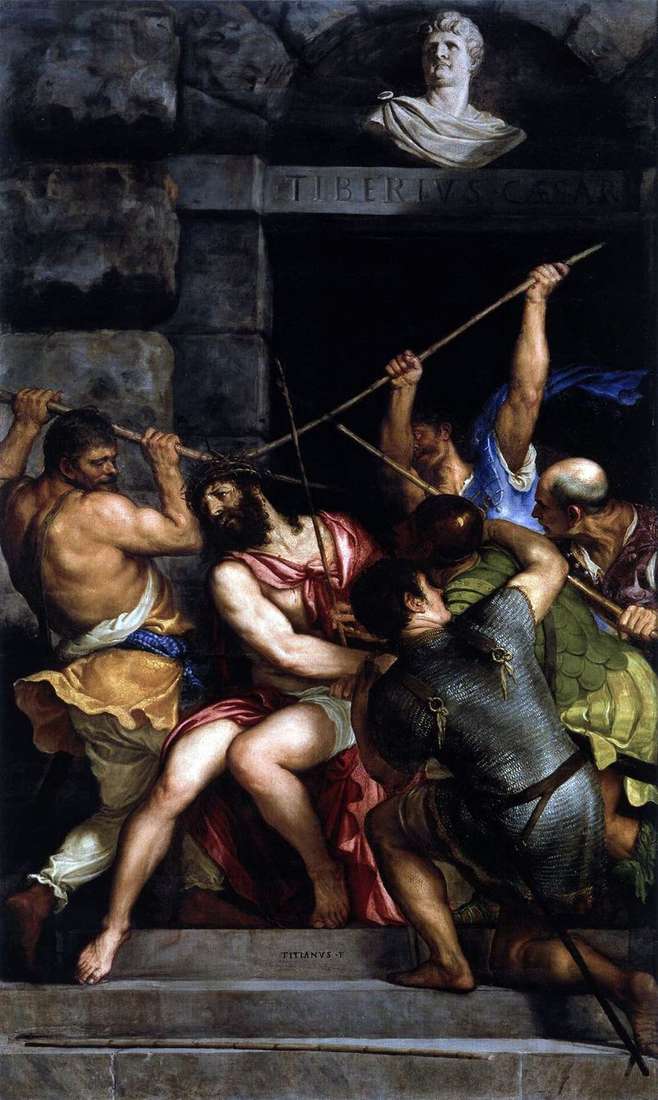 Crowning with thorns by Titian Vecellio
Crowning with thorns by Titian Vecellio Christ before Pilate by Hans Holbein
Christ before Pilate by Hans Holbein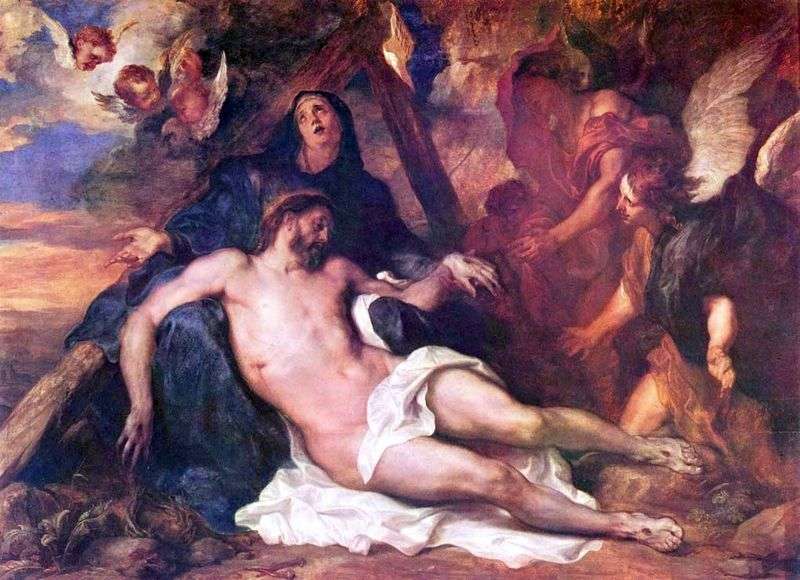 Lamentation of Christ by Anthony Van Dyck
Lamentation of Christ by Anthony Van Dyck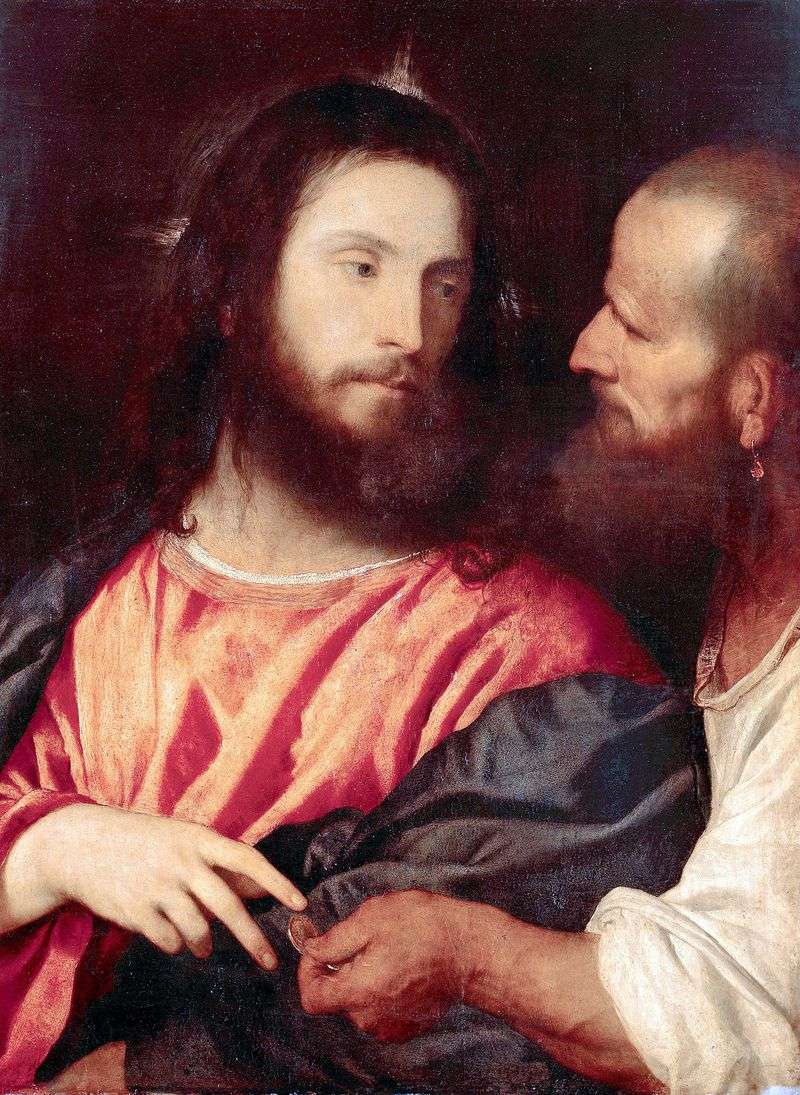 Caesar’s Dinar by Titian Vecellio
Caesar’s Dinar by Titian Vecellio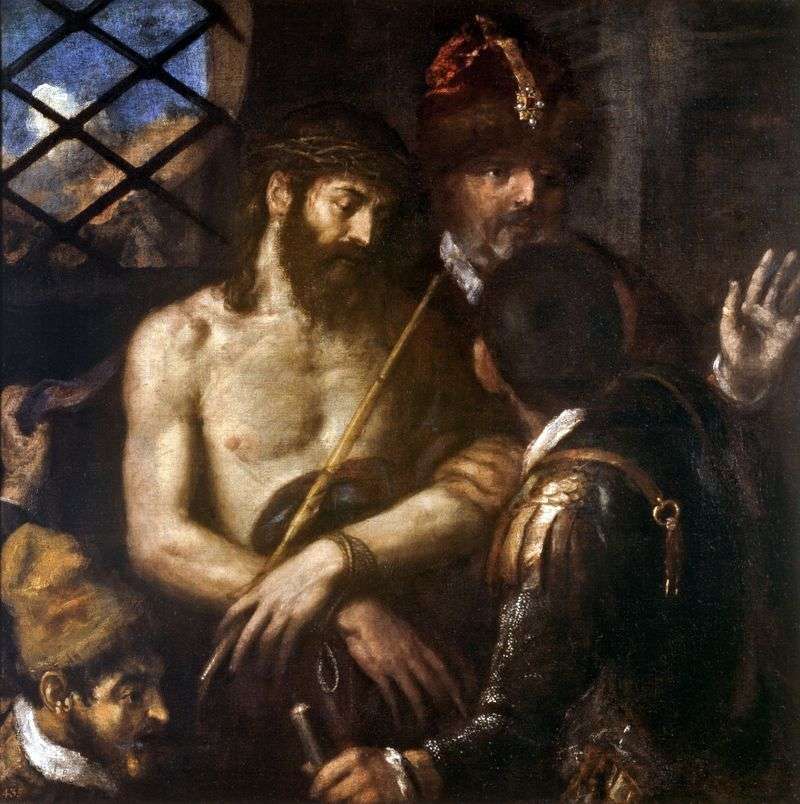 Mockery (Murder) of Christ by Titian Vecellio
Mockery (Murder) of Christ by Titian Vecellio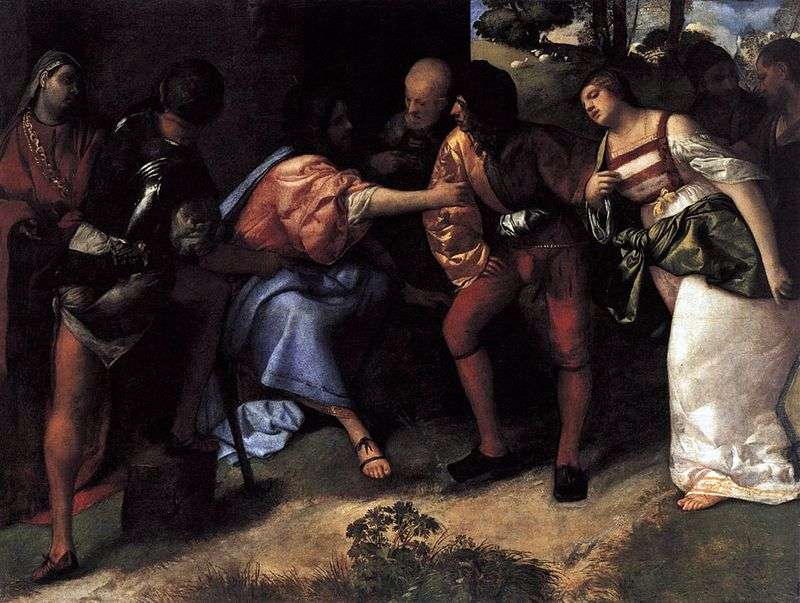 Christ and the unfaithful wife by Titian Vecellio
Christ and the unfaithful wife by Titian Vecellio The Scourging of Christ by Hans Holbein
The Scourging of Christ by Hans Holbein